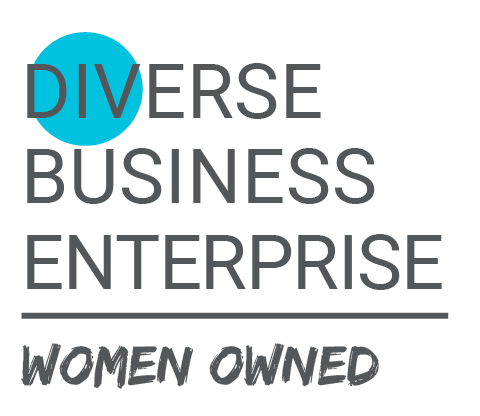Creating a pay equity strategy is crucial for organizations that want to foster a fair, transparent and motivated workplace. Pay equity ensures that employees are compensated fairly for their contributions, regardless of gender, race, or other demographics, eliminating pay gaps that can undermine morale and trust. In today’s evolving work environment, a strong pay equity strategy is more than just a legal requirement—it’s a powerful tool for building a positive workplace culture, fostering trust, and boosting employee morale. When employees feel valued and fairly compensated, they are more likely to stay motivated and engaged, which can indirectly enhance overall organizational performance.
A solid pay equity approach is key to attracting top talent and retaining valued employees. It shows a commitment to diversity, equity and inclusion (DEI) goals, ensuring that everyone, regardless of background, has access to equal opportunities. This dedication to fairness can strengthen a company’s reputation in the competitive job market, drawing in professionals who prioritize equity and transparency. Additionally, organizations that make pay equity a priority reduce their risk of legal repercussions tied to discriminatory compensation practices.
To achieve pay equity, companies must conduct thorough audits, identify and address disparities, and implement transparent changes. This guide covers the essential steps to building a successful pay equity strategy, from reviewing current compensation structures to making policy adjustments. Let’s explore these steps in detail.
Understanding the Importance of Pay Equity
Pay equity plays a foundational role in building a workplace culture where fairness and transparency drive employee engagement and satisfaction. Employees who feel valued and fairly compensated are more likely to stay committed to their roles, contributing positively to organizational growth. Beyond internal benefits, a clear pay equity strategy helps organizations position themselves as fair employers in a competitive talent market while ensuring compliance with applicable legal standards.
- Fair Compensation: Ensuring employees are compensated fairly for their contributions builds trust and boosts morale. When employees know they are valued, loyalty to the organization naturally follows.
- Legal Compliance: A robust pay equity strategy helps organizations stay compliant with laws regarding compensation practices, which can mitigate legal risks.
- Attracting Talent: Companies known for their commitment to equitable pay are more likely to attract top talent looking for integrity in the workplace.
- Enhancing Diversity: A pay equity strategy aligns with broader goals of fostering a diverse and inclusive workforce, creating an environment where everyone can thrive.
Conducting a Pay Equity Audit
Before any organization can tackle pay equity issues, a comprehensive audit of current compensation practices is crucial. This process helps uncover disparities, providing a clear picture of where adjustments are needed. The audit serves as a benchmark for companies to evaluate where they stand compared to industry standards and ensure fairness across the board.
- Data Collection: Gathering comprehensive compensation data—including salaries, bonuses, benefits, and employee demographics—is a critical first step.
- Analysis: Reviewing current compensation structures to identify disparities not justified by experience or job responsibilities is essential.
- Benchmarking: Comparing internal data with industry standards can uncover potential pay gaps and help the organization remain competitive.
Identifying Disparities
Once the data is collected, it’s time to dive deeper and identify any unjustified pay disparities across roles, performance levels, and recruitment practices. Understanding where disparities exist enables organizations to take focused action and address the root causes of inequity, ensuring a fairer environment for all employees.
- Job Analysis: Assessing whether employees in similar roles receive equitable compensation is crucial. If disparities exist, they warrant further investigation.
- Performance Reviews: Evaluating the link between performance assessments and compensation can reveal any biases that may need addressing.
- Recruitment Insights: Reviewing hiring practices to identify biases that may affect starting salaries is an important part of the process.
Setting Clear Objectives
Identifying gaps is just the beginning; setting specific, actionable goals for closing those gaps is key to achieving pay equity. These objectives should be measurable, trackable, and tailored to the organization’s needs, from adjusting salaries to equipping managers with the tools to promote fairness.
- Reduction Targets: Establishing specific goals for closing identified pay gaps within a defined timeframe keeps the organization accountable.
- Starting Salary Alignment: Ensuring equitable starting salaries for new hires promotes fairness from the start.
- Manager Training: Developing training programs to educate managers on equitable compensation practices fosters a culture of fairness.
Implementing Changes
For pay equity initiatives to be effective, companies must take meaningful steps to adjust their practices. This involves implementing salary adjustments, revising compensation policies, and offering training to decision-makers to maintain a commitment to fairness at all levels.
- Salary Adjustments: Making necessary salary adjustments is key to achieving equity goals and demonstrating commitment to fairness.
- Policy Revisions: Updating compensation policies to promote transparency and fairness is an important step.
- Training Initiatives: Providing training for managers and HR personnel helps to address and mitigate biases in decision-making processes.
Communicating the Strategy
No pay equity strategy can succeed without open communication. It’s essential for leadership to share the strategy’s goals and progress with the entire organization. Transparent communication helps build trust and ensures that employees understand the company’s commitment to fairness.
- Transparency: Clearly communicating the goals and significance of the pay equity strategy to all employees fosters trust and engagement.
- Regular Updates: Sharing progress on pay equity objectives and any changes implemented helps keep everyone informed.
- Feedback Opportunities: Creating channels for employees to voice concerns or provide feedback on compensation practices is essential for continuous improvement.
Monitoring and Evaluating Progress
Pay equity isn’t a one-time initiative—it requires ongoing monitoring and evaluation. Regular audits, combined with employee feedback and performance metrics, help organizations ensure that they’re staying on track. This adaptability allows for necessary adjustments as workforce dynamics evolve over time.
- Ongoing Audits: Conducting regular pay equity audits allows organizations to track progress and identify any new disparities that may arise.
- Performance Metrics: Monitoring employee satisfaction and turnover rates serves as key indicators of the strategy’s effectiveness.
- Adaptive Strategies: Being flexible and ready to adjust strategies based on findings and the evolving workforce dynamics is critical for long-term success.
Developing a pay equity strategy is more than a legal requirement; it’s an investment in a fair, inclusive, and thriving workplace. By committing to transparency, regular audits, and continuous communication, organizations can create an environment where every employee feels valued. This, in turn, fosters higher morale, enhances talent retention, and strengthens overall organizational success.



















